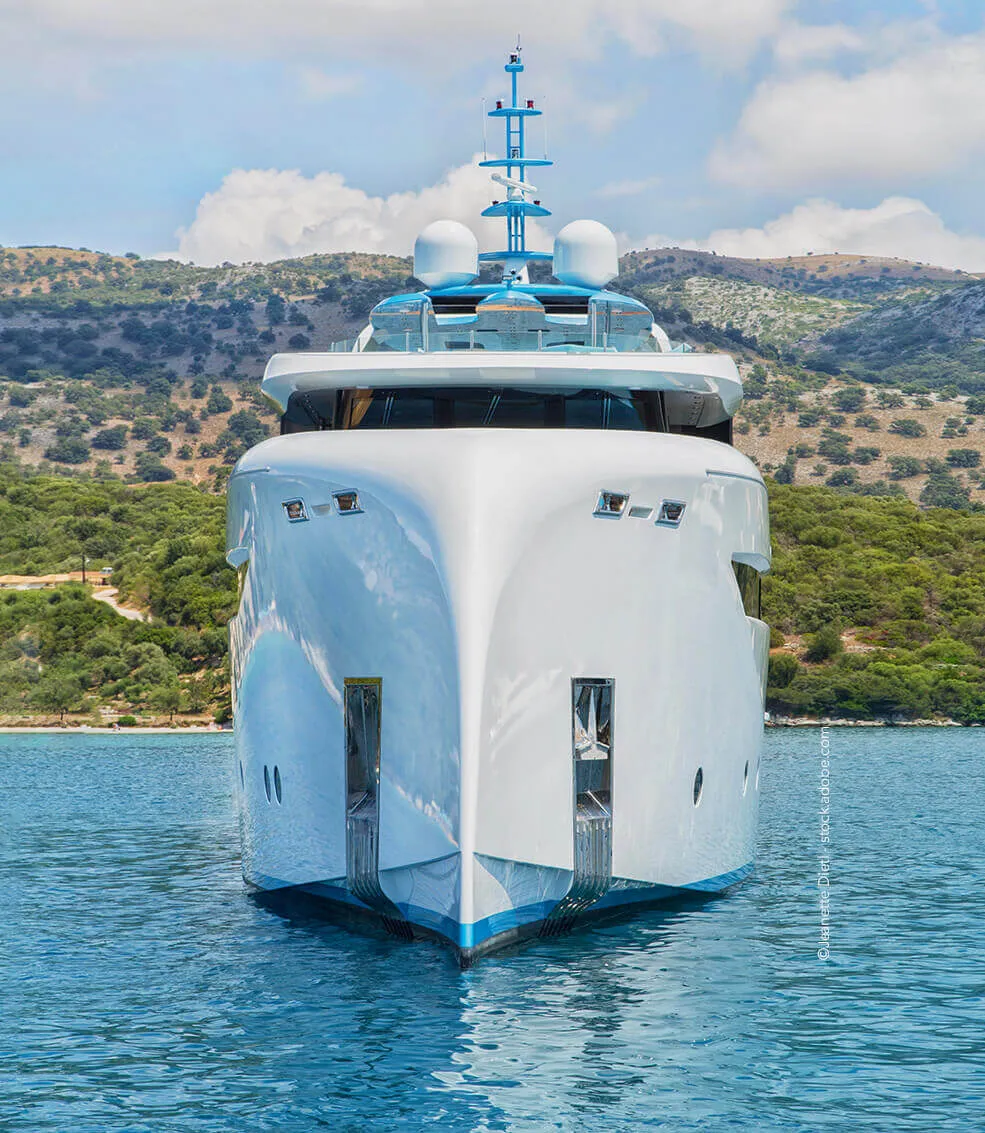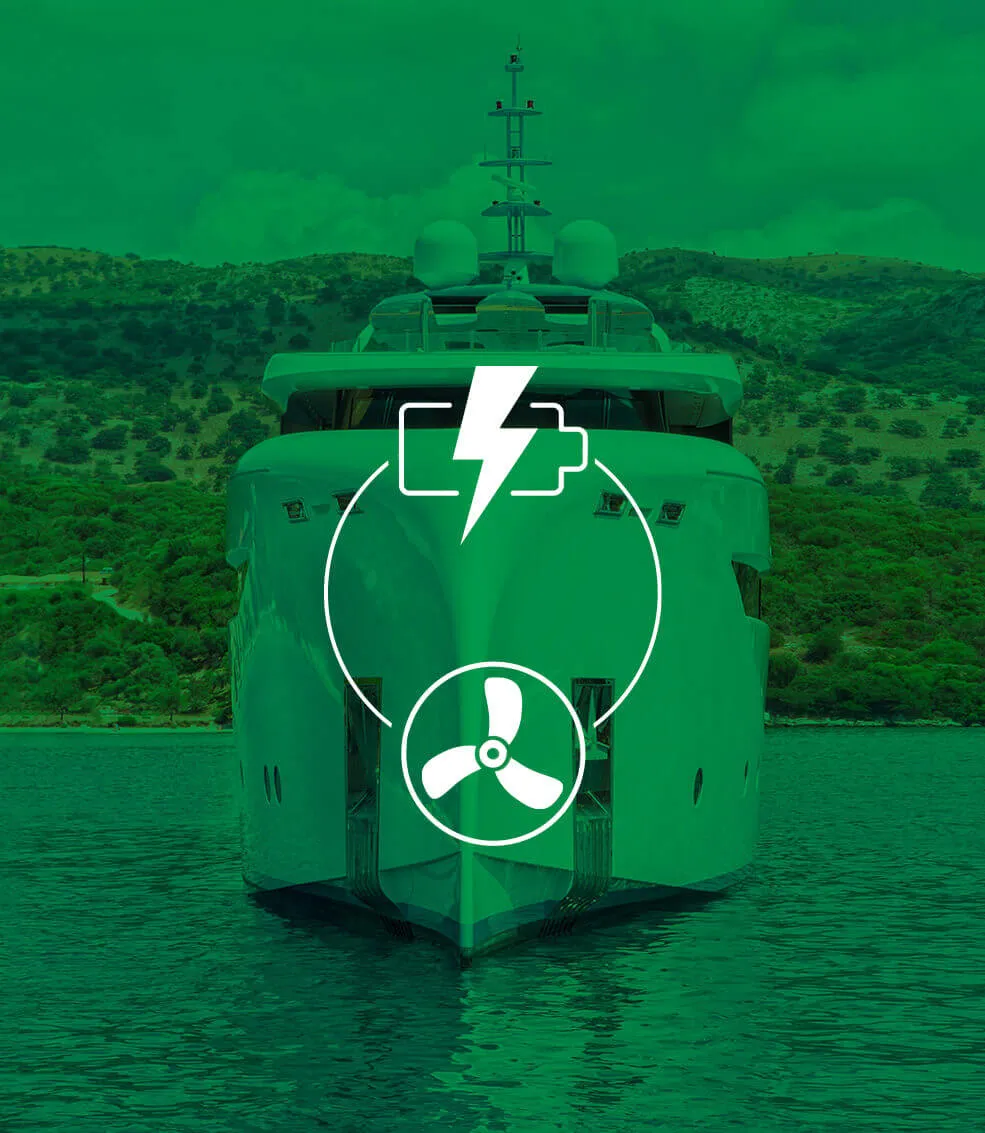Green technology for superyachts
Many yacht owners want clean yachts. While some emerging energy technologies are still in various stages of development, a number of options available today can make a big difference.
The idea of “greening” yachts, or ships of any type, has been gaining in popularity across the maritime industry in recent years. In fact, it seems to be on everybody’s mind today: many shipyards and designers are telling DNV GL that their customers are well aware of the widespread environmental concerns. Sailing and yachting enthusiasts are particularly interested in the preservation of the marine environment they hold so dear because they want to enjoy it in future, as well.
DNV GL has been focusing on this topic for many years, especially as environmental regulations have tightened, but unfortunately confusion and misconceptions still persist. Perhaps the greatest misconception or source of confusion is one that dogs the green debate generally: the idea that choosing more sustainable options means sacrificing performance and incurring higher costs.
Starting from the hull and coating, owners can work with yards and designers to ensure that these are optimized for the intended use of the vessel, including its operational profile and the preferred sea region. This alone can have a major impact on energy use and sustainability.

Batteries can make a big difference
A prime consideration today is the propulsion options, from diesel and diesel-electric systems to liquefied natural gas or even fuel cells, through to battery banks backing up the on-board electricity grid. Electrification is perceived to have major potential to transform the yacht industry: there are currently more than 250 all-electric or hybrid vessels in operation or under construction. What is truly impressive about this number is the fact that it has grown from practically zero over as little as five years. In discussions with DNV GL many yacht owners are either contemplating retrofitting their existing craft or building new ones with a battery-assisted power or hybrid propulsion system.
Including a battery system can have many benefits, such as reduced emissions, noise and vibration, lower maintenance and fuel costs, and compliance with current and future environmental requirements. However, integrating a battery bank into an existing or new vessel is a complex task that requires careful planning.
On yachts, batteries currently make the most sense in a hybrid scenario where they complement another power source to increase flexibility. They can help run the machinery, including generator sets, at optimum load; reduce fuel consumption and emissions to air; stabilize the on-board grid; avoid power blackouts; and enable silent operation for limited periods of time, for example in port or in marine sanctuaries. When combined with a propulsion system powered by LNG or another eco-friendly fuel, batteries can enhance the performance of these emission abatement technologies.

Expert knowledge is crucial
Batteries can, however, add weight, so the hull design must account for the weight distribution resulting from the battery pack. DNV GL can support customers in this process by modelling and simulating on-board energy systems to determine the best way to use batteries on a given vessel, including sizing and system integration. Various DNV GL class notations are available to ensure both proper battery installation and safety.
Most maritime batteries today are based on lithium-ion technology. Prices are falling while longevity and power delivery are improving. As the maritime market grows, costs are likely to come down further, similar to other industries, most notably cars and buses. The highly reactive nature of lithium batteries and the potential for thermal runaway does mean that appropriate protective measures must be taken, including a well-designed battery management system (BMS), fire protection systems, proper ventilation of battery spaces, and crew training to ensure that the systems are operated correctly.
Smart technologies
Fuels produced using renewable energy may be available in growing quantities and open up additional options for “green” yacht operations. In particular, liquefied hydrogen, ideal for fuel cells, has already been trialled in smaller vessels, and methane or diesel-like fuels produced via a Sabatier/Fischer–Tropsch process could be used in conventional or hybrid engines.
Performance management systems can make yacht operation significantly “greener” without the need for significant changes to the design or machinery. By tracking voyage, hull and propeller, engine and systems as well as fuel quality data, these systems can identify the causes of drops in vessel performance relative to performance baselines and CFD-enhanced analytics.
These examples just scratch the surface of all that can be done to enable greener yachting. As political and consumer interest sharpens its focus on environmental performance, rising public pressure is likely to lead to further efforts to reduce the ecological impact of all vessels. But even today attractive choices are available to owners who want their yachts to have a smaller environmental footprint. By looking at the latest technology, obtaining good advice, and making wise choices, they can have yachts that let them achieve this goal while even lowering their costs.
